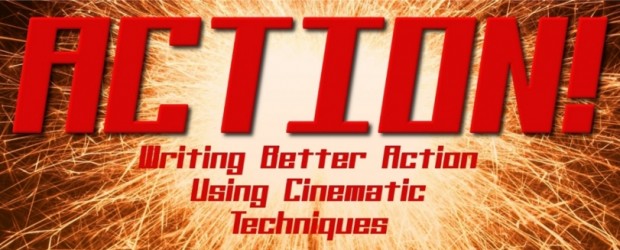In short, anywhere you want to set them.
I call the location of an action scene the set piece. Set pieces are crucial aspects of any action. Take two characters who are going to fight each other. Put them in a doctor’s office. Now put them on a beach. Now put them in a crosswalk. Each of those scenes has the same basic conflict: two characters fight. But the setting itself necessarily dictates their actions within that scene. Characters in action will always interact with their surrounding environment, and that can be crucial in the development and resolution of conflict. Crashing through a picture glass window in a frontier town bar is quite different from crashing though a picture glass window on the 43rd floor of a Manhattan skyscraper.
A set piece doesn’t have to be a static location like a room or a battlefield. Think about car chase scenes, for example. The road itself becomes the set piece, and the characters in their vehicles move through it.
When you’re creating your set piece, take a little time to populate it with objects and bystanders. You don’t have to mark every single item and person in a given location, but if the Hero and Opponent are going to interact with them in some way, give them a little thought and a reason to be where they are. If you really want your Hero to use a chainsaw against the zombies, he’s not going to realistically find one in the pizza joint. He will, however, find heavy pans, two-handed pizza slicers (have you ever seen one? They’re wicked!), and cooking oil. On the other hand, any number of interesting bystanders might be in the restaurant noshing on the Triple Pepperoni Heartburn Special when the zombies come. So if you have a mean streak toward Caucasian suburban thug wannabes, and have the zombies grab one when he trips over his pants because they only go halfway up his thighs, go right ahead.
Just make sure it all makes sense, because if your action scene doesn’t follow the logic of the world you’ve created, it will come across as fake and hollow.
